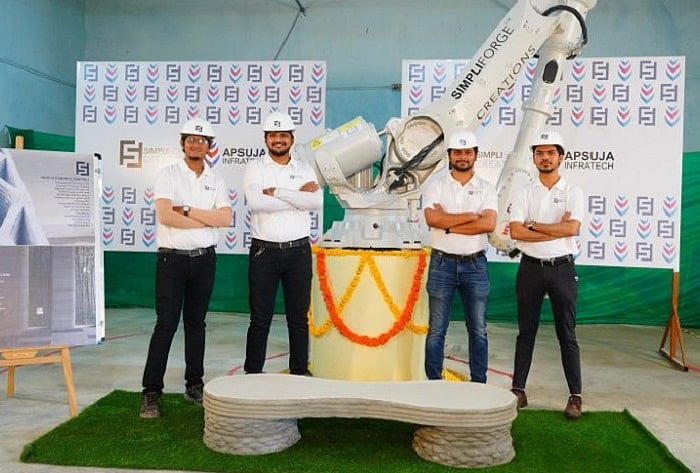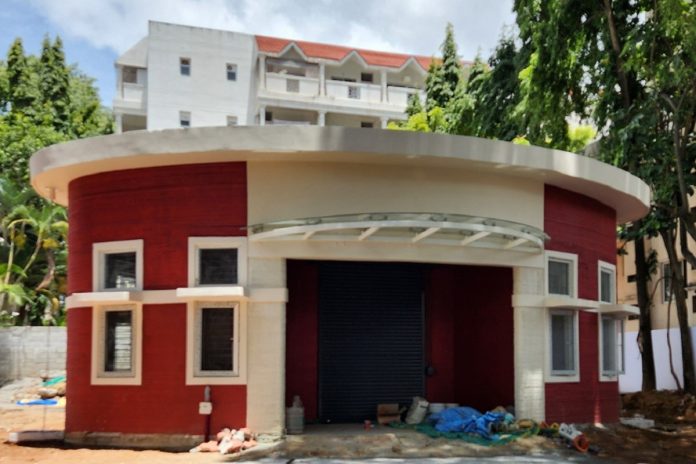Union Minister Ashwini Vaishnaw on Friday inaugurated India’s first 3D-printed post office in Bengaluru. The post office has been constructed using a 3D printing technology.
https://twitter.com/AshwiniVaishnaw/status/1692406662261604615
Constructed by Larsen and Toubro (L&T) on a plot of around 1,100 sq ft., the total construction cost is estimated to be around Rs 23 lakh — about 30-40 per cent cheaper than a structure built in the conventional way. While the building structure was completed by May 3, creating the drainage and water network took two months.
The building was printed in situ, using an automated 3-D concrete printer. This deposits concrete layer by layer, according to the 3-D model drawing and calls for a fine balance between the quick hardening and the flowability of the concrete mix.
If the pilot 3-D printed post office is a success, the postal department plans on extending this to 400 more locations which are hitherto unserved by postal services.
L&T has been among earliest major construction companies in India to embrace 3-D printing technology, aiming to complete projects, faster, at lower cost.
Using a large format concrete 3-D printer sourced from Denmark-based 3D construction equipment maker Cobod, they “printed” a small one-storied structure using locally sourced 3-D printable concrete mix in November 2019 as a learning exercise.

The company went on to construct a 2-storeyed 65 sqm (650 sqft) building at its Kanchipuram, Tamil Nadu facility. The structure was ‘printed’ in 106 hours.
Say the engineers at Cobod: “It is really impressive how L&T developed the 3D printable concrete and applied integral horizontal and vertical reinforcement in the building.”
First 3-D Printed Temple

In Siddipet, in Telangana state, another interesting building project has been launched: India’s first 3-D-printed temple for the Charvitha Meadows gated community.
The 3,800 sqft temple will feature three garbhas or sanctums, dedicated to Lord Ganesha, Lord Shiva and Devi Parvati.
The work is being undertaken by Apsuja Infratech with Simpliforge Creations. In March this year, Simpliforge printed and built, on the same site, a prototype bridge within just two hours — with designs developed by the International Institute of Information Technology (IIIT) , Hyderabad.

The company made headlines in construction circles, 2022, when it launched what was claimed to be India’s largest robotic 3-D printer, capable of crafting structures up to 7 metres in size.
Initiative By IIT-Madras Alumni


Another early mover in 3-D printed construction is Tvasta, a startup co-founded by alumni of IIT Madras who graduated in 2016, after having completed a final year project in 3-D printing.
In 2018 they put up arguably India’s first 3-D structure in the IIT Campus and two years later, completed a 1 BHK house nearby within 21 days.
Watch a YouTube video showing the full Tvasta process of building the 3-D house.
Other IITs are also into this technology: In a collaboration with a Belgium based 3-D Printer startup Deltasys E-Forming, IIT Guwahati is developing a building printer that uses construction waste as its raw material.
The government-driven Pradhan Mantri Awas Yojana (PMAY) has target to build of three crore houses by 2024: To reach an ambitious target like this, 3-D printed structures might be the only viable option.
In Gandhinagar, Gujarat, last year’s engineers of the Army’s Military Engineering Service 3-D printed houses for jawans at the South Western Air Command.
These Indian initiatives in harnessing 3-D printing for civil construction are the crest of a global wave, which sees in this technology, the potential to put up homes and other facilities, faster and cheaper than with traditional practice, even while using recycled and eco-friendly materials.
A Building Industry Association show earlier this month in the US, highlighted the fact that the modular techniques possible with 3-D printing will obviate the need for on-site carpenters, welders and other tradespersons on the building site.
Their conclusion: 3-D printing is now a disruptive technology in the building industry that has legs and is gaining traction — a small market that is set to explode.
For the companies and clients in India who are pioneering 3-D printed construction, it is an idea whose time has come.


